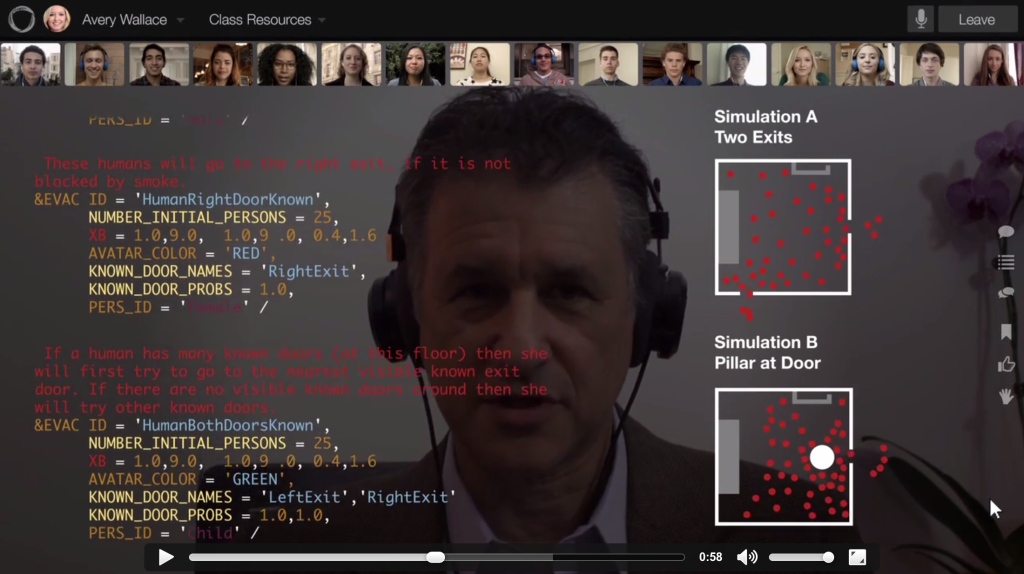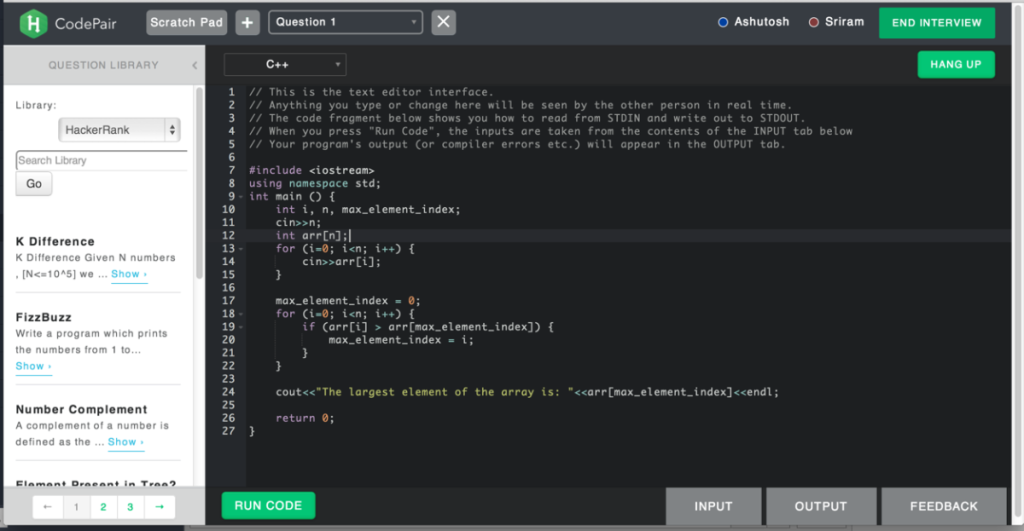I believe the great promise of WebRTC based video, audio and data applications has nothing to do with browser compatibility or plugins. It all comes down to finding innovative ways that you can use these technologies to add value through in-context communications.
Recently I came across two examples worth highlighting. The first is online education, and the other is for technical hiring.
Minerva using WebRTC to build an online University
I’m not just talking about online courses here, but an actual University founded on the idea of completely virtual education. Minerva’s overall model is fascinating, and you should check out their site. Particularly relevant to our conversation though is that their technology is built on WebRTC.
It’s not just about video chat though, far from it. This is what I mean by in-context real-time communications. The professor is doing a video chat with a large group of students, but they are also conducting polls through the same tool, manipulating data and images, and all of it is seamlessly integrated into one experience. I love how the data is being overlaid on top of the video in the Minerva demo.
By the way, it’s my understanding that Minerva is implementing WebRTC with the help of the open source Licode WebRTC platform.
HackerRank provides Remote Technical Hiring on a Real-Time platform with Twilio
TechCrunch recently highlighted a platform called HackerRank that helps you conduct remote technical interviews. The employer and interviewee are connected to an audio call using Twilio, and then the employer is able to watch the interviewee complete a coding exercise in real-time.
This might scare away some developers, but that’s probably a good thing. The value of this platform is that you get to watch a candidate code in real-time, and you can see how they solve problems and learn about their thought process. This addresses a huge risk in hiring developers, because those who interview well are not always those who code well, and vice versa.
How will you change the communication paradigm for your users?
Don’t be hindered by thinking of just how to add video chat to your application. The truly innovative and successful real-time apps are going to be the ones that focus on creative new ways to collaborate and add value to the conversation, not just add video.
To learn more about WebRTC and real-time technologies, we suggest our free newsletter RealTimeWeekly and our e-book on Building Real-Time Web Applications.











